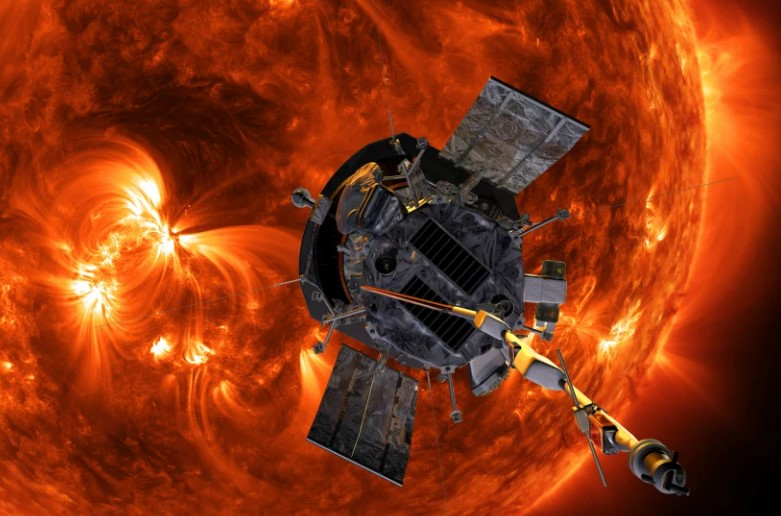“NASA’s Parker Solar Probe Sets Unprecedented Record with Closest Approach to the Sun”
Parker Solar Probe Breaks Record with Closest Approach to the Sun
NASA’s Parker Solar Probe has made history with the closest-ever approach to the Sun, flying a mere 3.8 million miles from its surface on December 24. This milestone achievement highlights humanity’s growing ability to explore the most extreme environments in our solar system.
The spacecraft reached a record-breaking speed of 430,000 miles per hour, making it the fastest human-made object in history. Its successful navigation through the Sun’s intense heat and radiation was confirmed when a signal was received on December 26, signaling the mission’s remarkable success.
Six Years of Strategic Planning and Execution
Launched in 2018, the Parker Solar Probe has spent six years meticulously refining its trajectory. The spacecraft used Venus’s gravitational pull in seven flybys to gradually approach the Sun. This strategy culminated in November 2024, when the probe completed its final Venus flyby, enabling it to enter an orbit that brings it closer to the Sun every three months.
This calculated orbit balances proximity with safety, allowing the probe to withstand the Sun’s heat while avoiding catastrophic damage.
Advanced Engineering for Solar Exploration
The Parker Solar Probe is protected by an innovative carbon foam heat shield designed to endure the intense heat of the Sun’s corona, where temperatures can exceed 1 million degrees Fahrenheit. The shield itself reaches a surface temperature of 1,800 degrees Fahrenheit, yet it keeps the spacecraft’s instruments at a safe operating temperature.
This engineering marvel ensures that the probe can collect groundbreaking data even in the most extreme conditions, advancing our understanding of solar physics.
A New Era in Solar Science
The Parker Solar Probe’s mission is expected to transform our understanding of the Sun’s behavior and its impact on the solar system.
“Flying this close to the Sun is a historic moment in humanity’s first mission to a star,” said Nicky Fox, director of NASA’s Science Mission Directorate. “By studying the Sun up close, we can better understand its effects on our technology and gain insights into the workings of stars across the universe.”
Nour Rawafi, project scientist for the Parker Solar Probe at the Johns Hopkins Applied Physics Laboratory, emphasized the mission’s groundbreaking nature: “This mission is ushering in a new golden era of space exploration, bringing us closer than ever to unlocking the Sun’s deepest and most enduring mysteries.”
The Road Ahead
As the Parker Solar Probe continues its mission, scientists anticipate unprecedented discoveries that will not only enhance our knowledge of the Sun but also provide insights into the dynamics of stars and their influence on planetary systems.
This record-breaking achievement underscores humanity’s relentless pursuit of knowledge and our ability to push the boundaries of exploration. With each daring approach, the Parker Solar Probe is unraveling the secrets of our star and paving the way for future space exploration missions.
Also read
Elon Musk’s Vision for the Future of Cryptocurrency till 2050
“Norovirus Outbreaks on the Rise Across the U.S., CDC Reports”
“85 Dead as Jeju Air Flight Crashes on South Korea Runway with 181 Aboard”
Ossamu Suzuki Dies at 94: His Legacy and Contributions to the Automobile Industry
